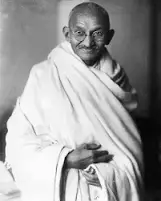The world today is a whirlwind of deadlines, notifications, and expectations, leaving many grappling with the challenges of managing stress. From high-powered CEOs to historical figures, the way individuals navigate stress offers valuable lessons. This article explores how to manage stress by drawing insights from renowned personalities, specific moments in history, and serene places known for their calming influence.
The Rise of Stress in a Fast-Paced World
The pace of life has accelerated dramatically, particularly with the advent of digital technology. In the past, stress often arose from physical survival challenges. Today, it is primarily mental and emotional, stemming from multitasking, societal pressures, and constant connectivity.
Dr. Hans Selye, often called the “father of stress research,” introduced the concept of stress in the 1930s, defining it as the body’s non-specific response to demands for change. He emphasized that while stress is inevitable, unmanaged stress can harm mental and physical health. Understanding how to manage it is critical for thriving in today’s world.
Lessons from Historical Figures
1. Mahatma Gandhi: The Power of Simplicity

Gandhi faced immense pressures while leading India’s independence movement, yet he famously practiced simplicity and mindfulness. By dedicating time to meditation, spinning, and reflection, he managed to maintain focus amidst chaos. His life demonstrates that simplicity and prioritization can reduce stress. Today, individuals can adapt Gandhi’s practices by embracing minimalism, focusing on what truly matters, and setting boundaries.
2. Winston Churchill: Rest and Resilience

Churchill navigated the harrowing days of World War II with a unique stress-management routine. Despite the weight of leading a nation during war, he scheduled daily naps and painting sessions. Churchill’s ability to find solace in creative outlets and rest underscores the importance of downtime in enhancing resilience.
3. Oprah Winfrey: Harnessing Gratitude

As one of the world’s most influential personalities, Oprah Winfrey attributes much of her success to her gratitude practice. She maintains a gratitude journal, reflecting on daily positives to cultivate joy and reduce stress. Her approach reminds us of the mental shift gratitude can bring, even in high-stress environments.
Time-Tested Strategies for Managing Stress
1. Time Management: The Eisenhower Matrix

Dwight D. Eisenhower, the 34th U.S. President, was renowned for his productivity and calm demeanor. He managed stress through effective time management, using the Eisenhower Matrix to prioritize tasks. This tool divides activities into four quadrants:
Urgent and important: Do immediately.
Important but not urgent: Schedule for later.
Urgent but not important: Delegate to others.
Neither urgent nor important: Eliminate.
By applying this matrix, individuals can reduce the stress of feeling overwhelmed by focusing on what truly matters.
2. Mindfulness Practices: Jon Kabat-Zinn

Jon Kabat-Zinn, the founder of Mindfulness-Based Stress Reduction (MBSR), introduced a structured approach to mindfulness for managing stress. Kabat-Zinn’s work demonstrates that mindfulness—paying attention to the present moment without judgment—can significantly lower stress levels. Practices like mindful breathing or body scans help ground the mind, offering a reprieve from constant racing thoughts.
Places that Inspire Calm
1. Kyoto, Japan: A Sanctuary for the Soul

Kyoto’s Zen gardens and tea ceremonies are renowned for fostering tranquility. These spaces encourage visitors to slow down, focus on the present, and connect with nature. Studies show that spending time in natural environments can reduce cortisol levels, a stress hormone. Incorporating elements of Zen philosophy, like decluttering or dedicating time to quiet reflection, can transform daily life.
2. Iceland: Embracing the Power of Nature

Known for its breathtaking landscapes and low-stress lifestyle, Iceland exemplifies the benefits of simplicity and nature. The country’s hot springs, like the Blue Lagoon, are popular stress-relievers, combining relaxation with geothermal therapy. In an urban context, creating a “nature corner” at home with plants or natural decor can bring some of Iceland’s calming influence into daily life.
3. Bali, Indonesia: The Art of Slowing Down

Bali’s culture, steeped in spirituality and balance, prioritizes rituals that create harmony between work and life. Practices like yoga, meditation, and community gatherings are central to life in Bali. These traditions serve as a reminder that stress is often mitigated by connection—both with oneself and with others.
Modern Tools for Managing Stress
1. Digital Detox
Constant notifications and screen time can elevate stress. Digital detoxes—designated periods without technology—help reset the mind. Public figures like Arianna Huffington advocate for “unplugged” routines, such as no devices in the bedroom or screen-free weekends, to create mental space.
2. Apps and Technology
Ironically, technology can also aid in stress management. Apps like Calm, Headspace, and Insight Timer offer guided meditations, breathing exercises, and sleep aids. Wearable devices, such as the Oura Ring or Fitbit, track stress-related metrics, encouraging healthier routines.
3. Therapy and Support Groups
Therapists and counselors provide invaluable tools for understanding and managing stress. Support groups, both online and in person, offer shared experiences and strategies, reducing feelings of isolation.
Personalized Stress Management: Finding What Works for You
Stress management is not a one-size-fits-all solution. While some find relief in mindfulness, others thrive on physical activities like running or dancing. Experimenting with different techniques can help identify what works best. For example:
Introverts may find solace in journaling or solo activities like reading.
Extroverts may benefit from social outings or team sports.
Daily Practices for Reducing Stress
1. Start with Morning Rituals
Begin the day with activities that set a positive tone, such as meditation, stretching, or reading.
2. Break Tasks into Smaller Steps
Large projects can feel overwhelming. Breaking them into manageable parts reduces stress and boosts productivity.
3. Take Regular Breaks
The Pomodoro Technique—working for 25 minutes, then taking a 5-minute break—prevents burnout and maintains focus.
4. Celebrate Small Wins
Recognize and celebrate even minor achievements to foster motivation and positivity.
5. Cultivate a Support System
Build relationships with people who uplift and support you during stressful times.
A Vision for the Future
Managing stress in a fast-paced world requires a proactive approach, blending historical wisdom, modern tools, and personal preferences. By integrating lessons from Gandhi’s mindfulness, Churchill’s creativity, or Oprah’s gratitude, we can better navigate today’s demands. Just as Icelandic hot springs or Kyoto’s Zen gardens offer peace, creating personal sanctuaries in our lives can help us manage stress effectively.
Ultimately, the goal is not to eliminate stress but to respond to it with resilience, grace, and a sense of balance. In the words of Marcus Aurelius, the Roman emperor and Stoic philosopher:
“You have power over your mind—not outside events. Realize this, and you will find strength.”
By focusing on what we can control and seeking harmony in the chaos, we can thrive, even in the fastest-paced world.